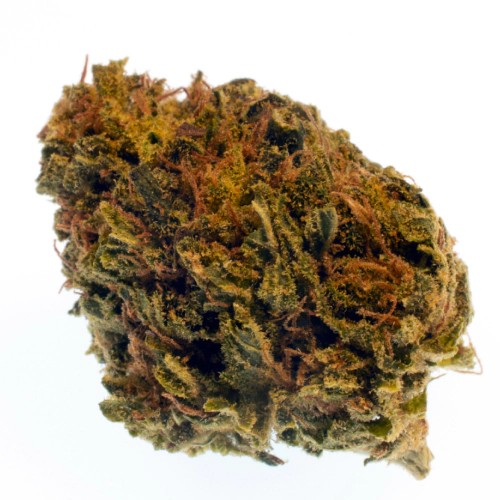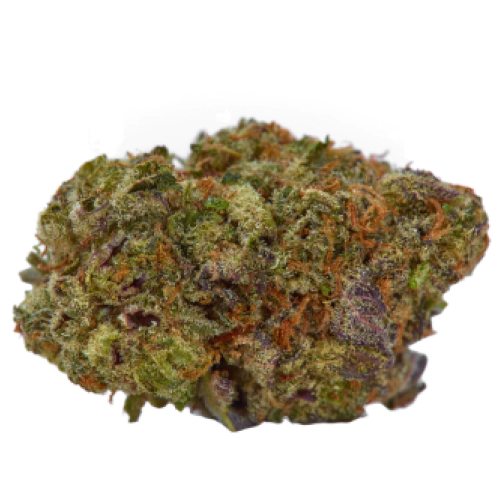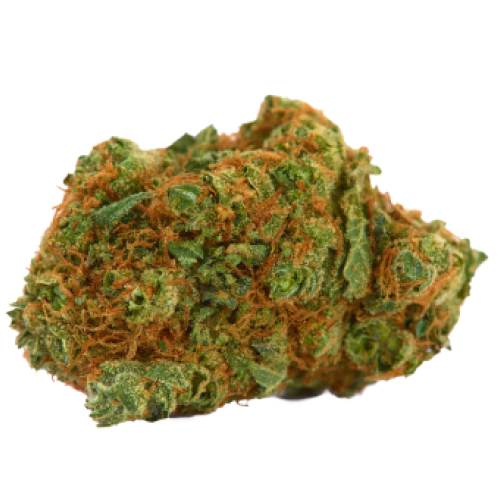THC 17.8 - 20.6%
CBD 0.21 - 0.43%
Effect Relaxed
Flavor Woody
22.4 - 25%
0.62 - 0.9%
0.08 - 0.67%
Spicyherbal, Pine
Energetic
The official breeder of this strain is unknown, but Durban Poison was brought to the United States from South Africa. Its parental strains are unknown, but this pure Sativa has a unique flavor and type of high. Growing this weed plant from Durban Poison seeds is easy for beginners.
Helped me deal with my terrible nausea, I can even eat without stressing nowadays.
Durban Poison strain recommended by Laurel (Lo) Friesen, CEO & Founder of Heylo. Read more about Heylo in Grower Stories #57
This cannabis strain contains ocimene, terpinolene, and myrcene. Also, smokers most often noted that the first thing they felt was the sweet citrus scent. The following scents are also mentioned:
This strain is often described as both sweet and spicy, the strain smell is incredibly unique. It holds bold, pungent, earthy tones in its breaths with a light hint of pine sap finish.
THC levels range from 24% to 28%, and in some cases go up to 30% of the content. It is definitely only suitable for experienced users. The high does not come immediately, but it works both physically and mentally. This kush helps consumers concentrate and improve their creativity, which helps with tough and boring work. It is also rumored that this cannabis speeds up the metabolism and allows you to burn more calories. However, side effects are fatigue and anxiety. Medicine uses the Durban Poison strain to combat:
This strain can be used with edibles as well as smoked. Be sure to know Durban Poison THC content when eating it. As this is a highly stimulatory form of weed, you don’t want to overdose on pot brownies, so ensure you count your THC points carefully.
This seeds grow best in hot climates. Using the right fertilizer can increase yields. Genetics also made the plant resistant to pests, viruses, and bacteria, as well as small fluctuations in temperature. Cultivators prefer to use hydroponic methods. Flowering time takes 10-12 weeks.
| THC | Tetrahydrocannabinol, or THC, is a major cannabis chemical compound. It is a psychoactive element that stimulates dopamine release and induces euphoria or happiness. THC-rich strains may be helpful with such conditions as lack of appetite, chronic pains , etc. It is considered to be the primary active marijuana component. | 22.4 - 25% |
| CBD | Cannabidiol, or CBD, is a major compound in cannabis, which is non-psychoactive. It is also proved to counteract the side effects of the second major component THC. CBD is widely used for medicinal purposes in rubs, oils and so on. It is helpful in muscle pain cases, may treat arthritis and migraines. Even Greeks used it against pain, while Queen Victoria applied it to get rid of menstrual cramps. | 0.62 - 0.9% |
| CBC | Cannabichromene, or CBC, is a minor cannabinoid, meaning that its quantity in cannabis is quite little. Though it has the same origin as CBD and THC, it is different in functions. Without any psychoactive effects, it is an efficient cannabis compound in combating acne and depression. CBC produces analgesic, antibacterial and anti-inflammatory effects. | 0.22 - 0.84% |
| CBG | Cannabigerol, or CBG, is one of the minor cannabis compounds in adult plants. On the other hand, young ones contain a lot of this antibacterial and anti-inflammatory component. During the growth, CBG is converted into different cannabinoids, mostly THC and CBD. The compound itself increases appetite and decreases eye pressure. | 0.08 - 0.67% |
| CBN | Cannabinol, or CBN, is a trace element in cannabis that is considered to be mildly psychoactive. It appears from oxidation THC, exposed to light and heat. CBN is mostly contained in old cannabis and in traditional hashish. It is effective against insomnia, bacterial infections and appetite loss. | 0.18 - 0.3% |
| THCV | Tetrahydrocannabivarin, or THC-V, is a compound contained in cannabis in trace amounts. Even though it is close to THC molecularly, it is different in effects. This compound may be psychoactive only in large amounts. THC-V reduces blood sugar, controls appetite, stimulates bone growth, etc. African Sativa strains are the richest in THC-V. | 0.56 - 1.18% |
| Pinene | Pinene is one of the most widespread terpenes in nature, found in pine trees, basil, nutmeg, parsley, and rosemary. Cannabis containing terpene (alpha-pinene or α-pinene) boasts a strong pine scent. Pinene is responsible for anti-inflammatory, pain-relieving, and anti-anxiety effects. | 0.07% |
| Myrcene | Myrcene (also known as β-myrcene) is one of the most common terpenes found in cannabis, representing more than 20% of the modern marijuana terpene profile. Myrcene has a distinct earthy, musky flavor, resembling cloves. It is responsible for calming and soothing effects of weed. Myrcene is also found in hops, thyme, mango, lemongrass, guava melon. | 0.12% |
| Ocimene | Ocimene (derived from the Ancient Greek word Ocimum meaning basil) is a terpene with sweet and herbaceous flavors, also boasting citrusy and woody undertones. Naturally, ocimene occurs in mint, parsley, orchids, hops, kumquats, mangoes, basil, bergamot, lavender, and pepper. Offers antifungal, anti-inflammatory, and antiviral properties. | 0.07% |
| Camphene | Camphene is terpene common for carrots, pepper, dill, fennel, nutmeg, thyme, as well as other fruits and vegetables. Camphene has a damp, pungent, herbal, minty aroma with pine undertones. In cannabis, mostly found in Indica strains. Camphene causes cooling sensations, having anti-inflammatory, antibiotic, antioxidant, analgesic, and antifungal effects. | 0.08% |
| Humulene | Humulene (also known as α-humulene) is one of the major terpenes found in cannabis, contributing to woody, earthy, spicy, herbaceous, and, mainly, floral aromas of cannabis. Used in modern medicine, humulene offers anti-inflammatory, antibacterial, and appetite suppressant effects, which have been well-researched by pharmaceutical companies. | 0.01% |
| Limonene | Limonene (also known as d-limonene) is the second most common terpene in nature and the third most common terpene in cannabis. It has a powerful citrus aroma and can be found in all citruses, including lemons, oranges, grapefruits, limes, juniper, etc. Limonene is known to elevate moods and provide anxiety, depression, and stress relief. | 0.07% |
| Linalool | Linalool (also known as beta linalool, linalyl alcohol, linaloyl oxide, and p-linalool) is one of the rarest terpenes found in cannabis, mostly in small quantities. Linalool is known for its spicy and lavender aroma, bringing relaxation and calming effects. It is also said to provide anti-inflammatory and analgesic properties that can be useful for athletes. | 0.01% |
| Valencene | Valencene is a terpene that got its name from Valencia oranges - a fruit where It's initially found. Valencene offers citrusy, sweet aromas, with flavors having notes of oranges, grapefruits, tangerines, and, occasionally, fresh herbs or freshly cut wood. Citrus aromas, frequently found in a wide variety of cannabis strains, are contributed to by valencene, which is known for anti-inflammatory and insect repelling properties. | 0.17% |
| Terpinolene | Terpinolene is one of the most common terpenes found in cannabis; however, It's usually presented in small quantities. Is responsible for piney, floral, herbaceous, and even a little bit citrusy aroma of cannabis. Terpinolene can be found in lilacs, nutmeg, and cumin. In cannabis, terpinolene contributes to the sensation of "freshness." Has the potential to reduce the risk of heart diseases. | 0.36% |
| Caryophyllene | Caryophyllene (also known as beta or b caryophyllene) is a terpene found in many herbs and spices, such as black pepper, basil, rosemary, and oregano. Cannabis high in caryophyllene delivers a strong spicy, peppery aroma, resembling cinnamon and cloves. Caryophyllene offers potent anti-inflammatory and sedative effects. | 0.05% |
| Total terpenes content | 1.01% |
THC 17.8 - 20.6%
CBD 0.21 - 0.43%
Effect Relaxed
Flavor Woody

THC 20.25 - 22.25%
CBD 0.48 - 0.78%
Effect Euphoric
Flavor Sweet
THC 18.5 - 21.83%
CBD 5.49 - 5.77%
Effect Talkative
Flavor Spicyherbal
THC 22.5 - 24.5%
CBD 0.44 - 0.5%
Effect Relaxed
Flavor Rose
THC 14 - 16%
CBD 0.41 - 0.67%
Effect Uplifted
Flavor Sweet
THC 9.67 - 7%
CBD 11.05 - 11.4%
Effect Happy
Flavor Tobacco
THC 18.33 - 21.33%
CBD 3.18 - 3.43%
Effect Energetic
Flavor Flowery
THC 18 - 19.5%
CBD 0.7 - 1.1%
Effect Relaxed
Flavor Earthy
THC 18.6 - 20.8%
CBD 0.55 - 0.77%
Effect Relaxed
Flavor Orange
THC 23.5 - 24.75%
CBD 0.41 - 0.78%
Effect Sleepy
Flavor Berry
THC 21 - 22.75%
CBD 0.46 - 0.78%
Effect Euphoric
Flavor Sweet
THC 15.5 - 17%
CBD 0.33 - 0.58%
Effect Relaxed
Flavor Pine
THC 16.33 - 18.33%
CBD 0.62 - 0.77%
Effect Giggly
Flavor Spicyherbal

THC 20.8 - 23.4%
CBD 0.43 - 0.64%
Effect Sleepy
Flavor Earthy

THC 12 - 16%
CBD 0.85 - 1.16%
Effect Happy
Flavor Woody
THC 20.5 - 23.25%
CBD 0.38 - 0.77%
Effect Sleepy
Flavor Sweet
User Reviews 24
When used in large amounts I did feel a bit of fatigue after the high wore out.
Helped me deal with my terrible nausea, I can even eat without stressing nowadays.
Feminized Durban Poison seeds are the best. I am about to grow all my stash from now.
Just one brownie and you will be set. The potency is just so that when bakes into cookies and brownies a small piece is enough. For the high tolerant folks like me this will be like walking into warm cannabis hugs only that they get you pumped and ready for the day.
Anyone esle feel like the growing time was too long? Need me 8 week maturing MJ.
When we talk Sativa, y'all better be sure this is the stuff I am talking about. High potency, the THC is over 20% which is already a win for me. Then the EFFECTS wheeew, two inhales in and I could feel my energy levels picking up. About to kill it at work.
As a long-time cannabis user I have tried many strains over the years and none has been able to match up with Durban Poison. It is my go-to medicine when I want to feel motivated, focused, and energetic.
Not for the faint heart. This shit is quite potent. It is very tasty and is so far one of the best hybrids I have come across. Very cerebral and a good cure for headaches. Durban poison makes me functional after a long tiresome day. It however gives me a hell of cotton mouth, but I managed it by staying hydrated.
Electrifying and euphoric high. Best mmj for pain relief and mood elevation.
Easily a favorite strain. A fast-hitting high right between the eyes. One of the best highs I have experienced.
Very energetic high with a unique character to its taste and buzz. Ideal for morning or daytime use.
My holy grail of pot with a clear transcendent high with no intense and drowsy stone common with most strains.
Perfection at its best. Gives you an energy boost and a sense of well-being.
Its the most amazing strain ever. It has a deep and pleasurable high.
My wife and I smoked this strain then spent hours fuckin. Quite an active and Tingley strain.
Durban Poison pre-rolls give me a feeling like no other. It hits quite strong.
this strain isnt for workout…
Energetic and lazer focus.
good sativa for daytime use.
no help with my chronic pain(((
delicious strain with a nice head high.
smooth consistent high.
Blew me away!
The high was good.
Write a Review